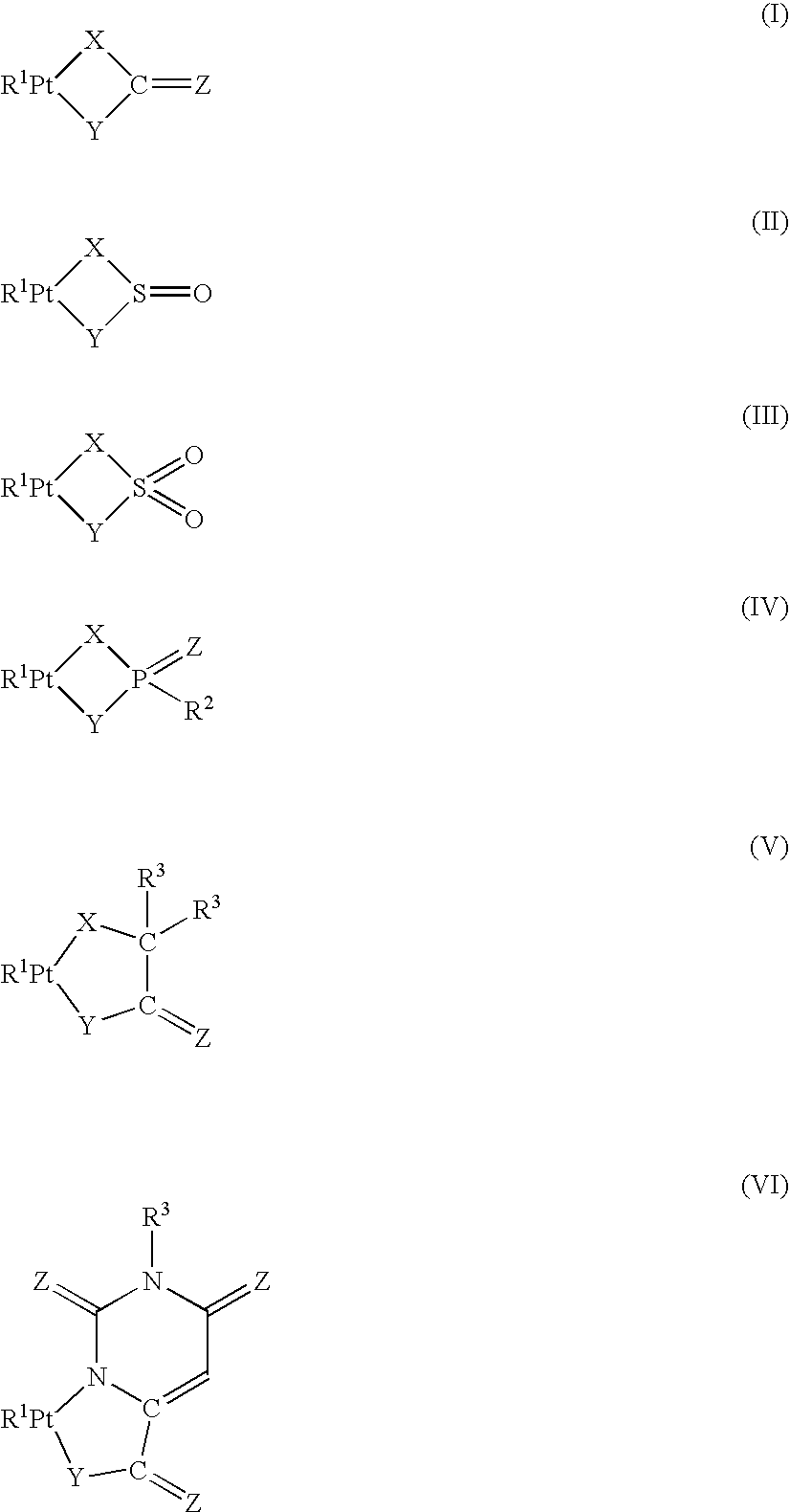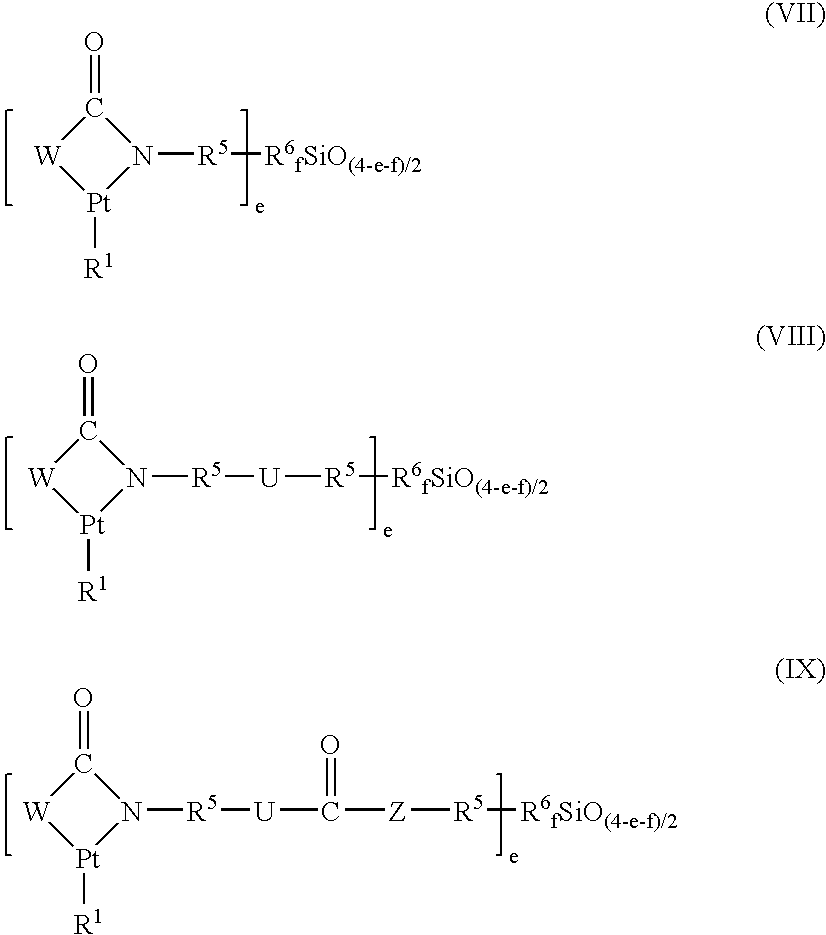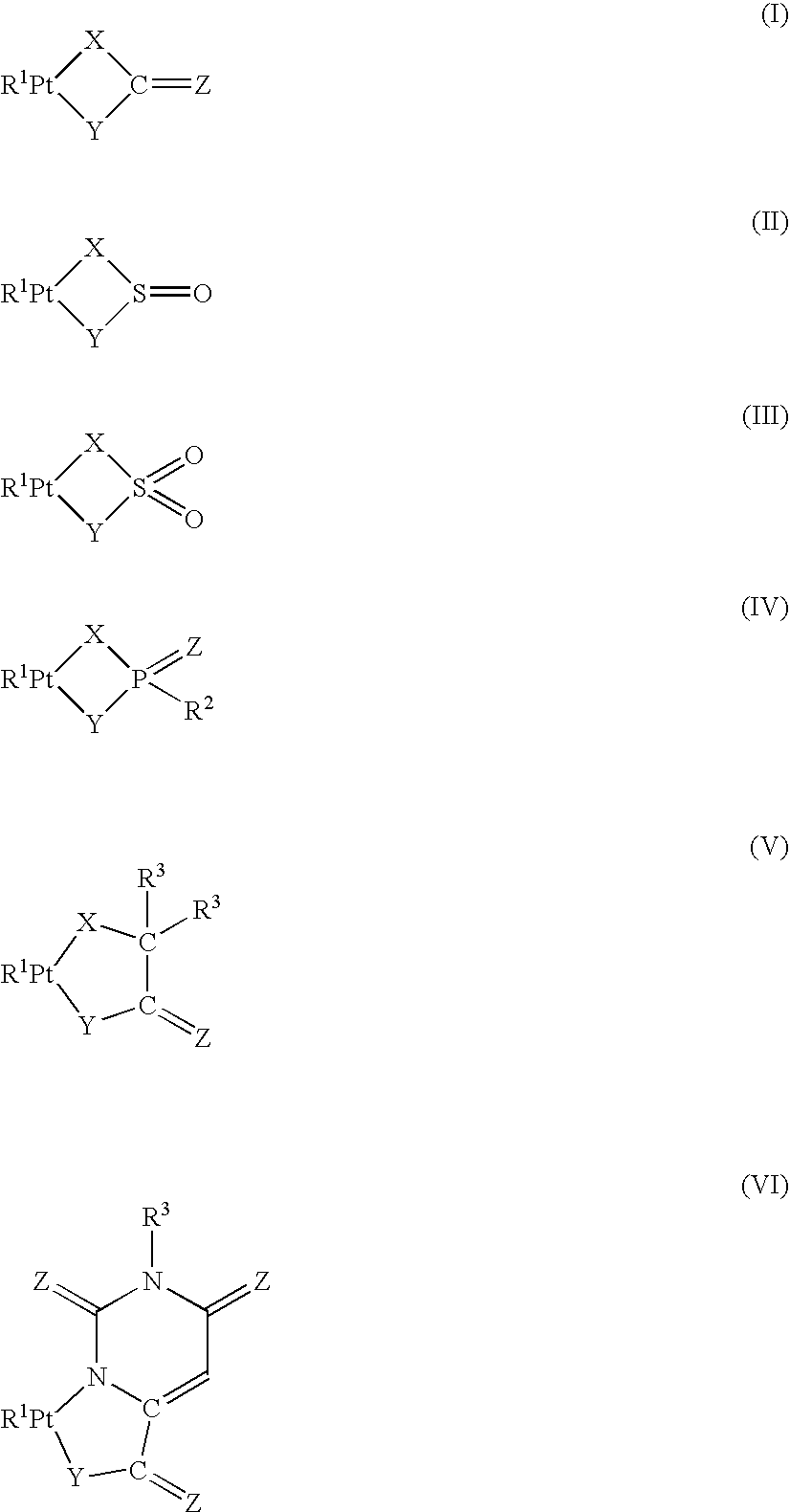Crosslinkable polyorganosiloxane compositions
a polyorganosiloxane and composition technology, applied in organic compounds/hydrides/coordination complexes, physical/chemical process catalysts, metal/metal-oxide/metal-hydroxide catalysts, etc., can solve the problem of only a highly restricted pot life at room temperature, high risk of contamination by traces of platinum, etc. problem, to achieve the effect of efficient elevated temperature crosslinking and long pot li
- Summary
- Abstract
- Description
- Claims
- Application Information
AI Technical Summary
Benefits of technology
Problems solved by technology
Method used
Image
Examples
example 1
[0138] 50.0 parts of a vinyldimethylsiloxy-terminated polydimethylsiloxane with a viscosity of 20 Pa·s, 0.033 part of 1-ethynyl-1-cyclohexanol and 1 part of SiH crosslinker were mixed homogeneously with the aid of an RE 162 stirrer from Janke & Kunkel IKA-Labortechnik, the SiH crosslinker being a copolymer of dimethylsiloxy and methylhydrosiloxy and trimethylsiloxy units with a viscosity of 330 mPa—s and a content of Si-bonded hydrogen of 0.46% by weight. Subsequently, 0.0014 part of catalyst 1, corresponding to a content of 10 ppm of Pt based on the overall composition, dissolved in 0.5 ml of methylene chloride was stirred in at room temperature.
[0139] Examples 2 to 11 correspond to Example 1 except that different catalysts were used. The mixtures can be taken from Tables 1a and 1b. The amount of the catalysts used gave rise in each case to 10 ppm of Pt in the overall composition.
example 12
[0140] The procedure described in Example 1 is repeated with the modification that, before the catalyst addition, 47 mg of 3-methyl-1-dodecyn-3-ol were stirred in instead of the ethynylcyclohexanol.
example 13
[0143] A laboratory kneader was initially charged with 255 parts by weight of a vinyldimethylsiloxy-terminated polydimethylsiloxane having a viscosity of 20 Pa·s which were heated to 150° C. and admixed with 180 parts by weight of a hydrophobic pyrogenic silica with a specific BET surface area of 300 m2 / g and a carbon content of 3.95% by weight. This formed a highly viscous mass which was subsequently diluted with 165 parts by weight of the abovementioned polydimethylsiloxane. Kneading under reduced pressure (10 mbar) at 150° C. removed volatile constituents over one hour.
[0144] 487.29 parts of the thus prepared base composition were mixed on a roller at a temperature of 25° C. with 0.160 part of 1-ethynyl-1-cyclohexanol, 10.55 parts of SiH crosslinker and 2.0 parts of catalyst batch to give a homogeneous composition, the SiH crosslinker being a copolymer of dimethylsiloxy and methylhydrosiloxy and trimethylsiloxy units having a viscosity of 330 mPa·s and a content of Si-bonded hyd...
PUM
| Property | Measurement | Unit |
|---|---|---|
| viscosity | aaaaa | aaaaa |
| viscosity | aaaaa | aaaaa |
| viscosity | aaaaa | aaaaa |
Abstract
Description
Claims
Application Information
 Login to View More
Login to View More - R&D
- Intellectual Property
- Life Sciences
- Materials
- Tech Scout
- Unparalleled Data Quality
- Higher Quality Content
- 60% Fewer Hallucinations
Browse by: Latest US Patents, China's latest patents, Technical Efficacy Thesaurus, Application Domain, Technology Topic, Popular Technical Reports.
© 2025 PatSnap. All rights reserved.Legal|Privacy policy|Modern Slavery Act Transparency Statement|Sitemap|About US| Contact US: help@patsnap.com



